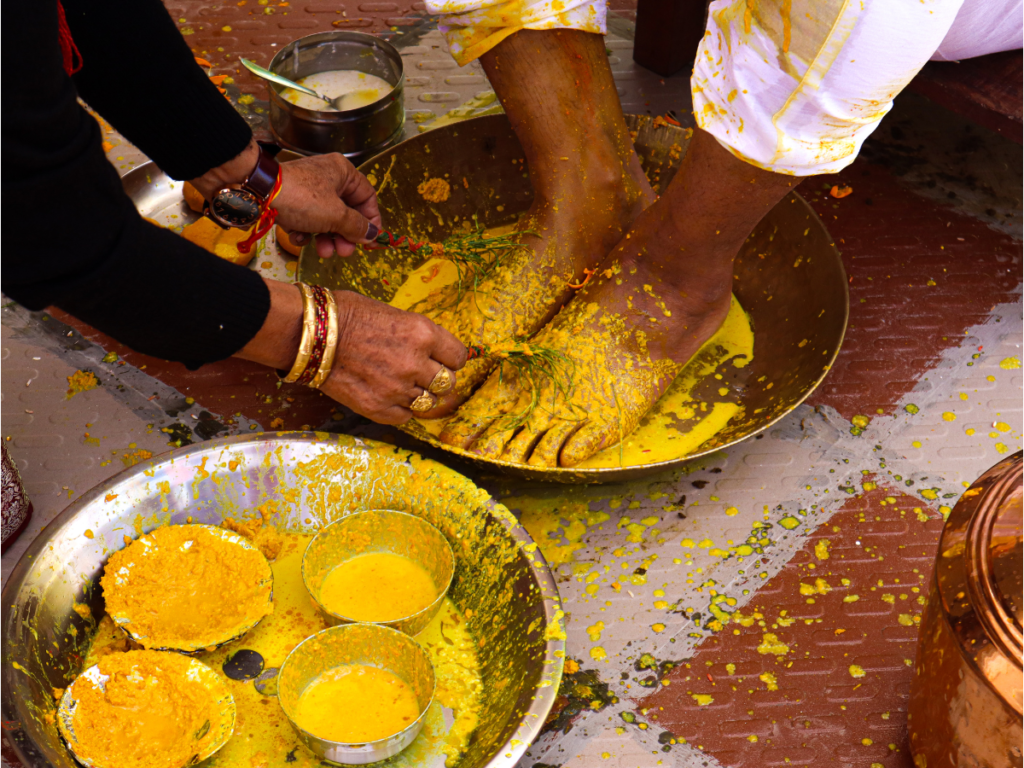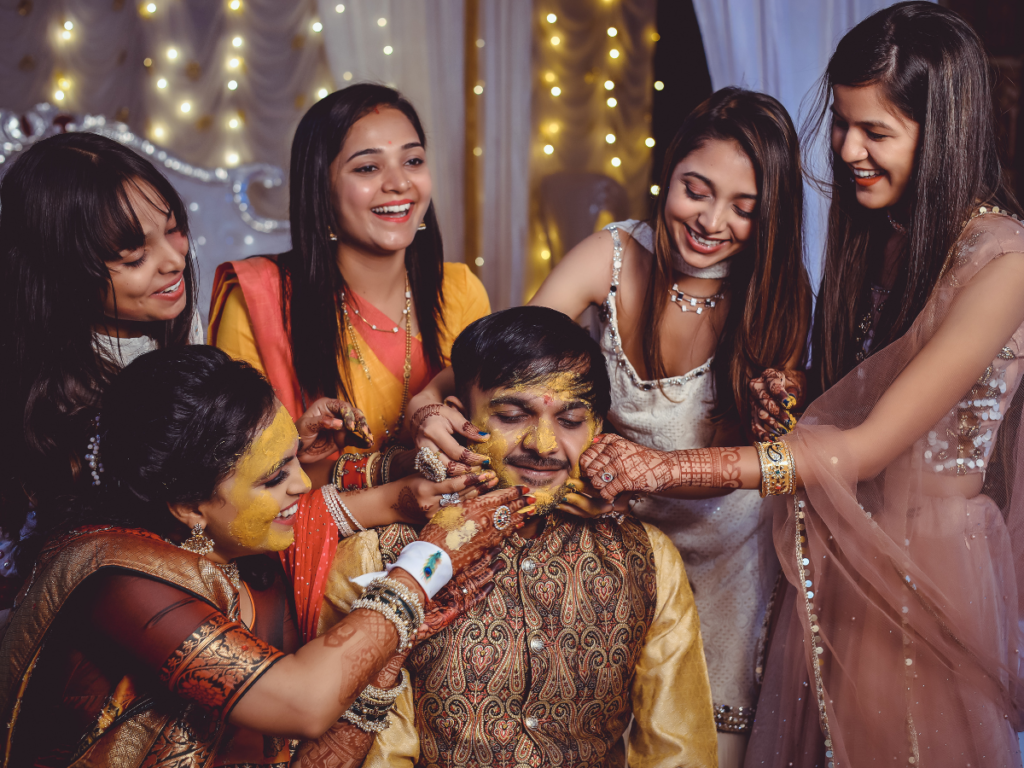
- Admin
- Oct 14, 2025
- Marriage
Significance of the Indian Haldi Ceremony
Old customs and traditions surrounding the Haldi ceremony in Indian culture.
Introduction:
An important pre-wedding custom in Indian culture is the haldi ceremony. It is a customary rite that plays a significant role in Indian marriages and is rife with symbolism. In Gujarat, Pithi, and Rajasthan, the Haldi ceremony is also known as the “Haldi Kachera” and the “Haldi Kunku”. During the Haldi ceremony, the bride and groom are blessed with good health, wealth, and happiness for their future lives.
The origins and history of the Haldi ceremony:
In India, people have been performing the Haldi ceremony for millennia. The tradition of the event dates back to the Vedic era, when religious rites employed haldi as a holy component. With references to Haldi in Ayurvedic scriptures, the usage of Haldi as a cosmetic procedure also has a long history. The Haldi ritual has been handed down through the centuries and is said to have its roots in the Indian subcontinent.

The traditional preparations for a Haldi ceremony include:
Typically, the Haldi ceremony occurs the day before the wedding. A few days before the wedding, preparations get underway. The families of the bride and groom come together to prepare the haldi paste, which is created by combining sandalwood powder, turmeric powder, and other ingredients. The bride and groom are then blessed with good health, wealth, and happiness by applying the haldi paste to their bodies.
The Haldi ritual’s symbolism and significance:

It represents the purifying of the body and spirit. The Haldi paste is applied on the skin of the bride and groom to ward off evil spirits since it is said to have healing and cleansing effects. The ritual is also said to bring the couple luck and wealth. The preparation of the Haldi paste by the families of the bride and groom is considered a representation of the joining of two families during the Haldi ritual.
Haldi’s function in Indian weddings:
In Indian weddings, the haldi ceremony is a significant pre-wedding custom. The Mehendi ceremony, another important pre-wedding rite, usually takes place after the Haldi ceremony. Both rituals are seen as fortunate and are essential to Indian marriages.
The Haldi ceremony in several Indian regions:
In many parts of India, the Haldi ceremony is observed in various ways. The ritual is known as “Pithi” in Gujarat and is observed with considerable grandeur. It is known as “Haldi Kachera” in Rajasthan, where it is joyfully observed. The ritual is known as “Haldi Kunku” in Maharashtra, and the ritual is known as “Haladi Shastra” in Karnataka, where it is enthusiastically observed.
Conclusion
In conclusion, this ceremony is a significant pre-wedding custom in Indian culture that represents wealth, cleansing, and good fortune for the union. Family and friends gather for this happy and festive occasion to toast the marriage of two people. It is said that using the mystical plant would benefit the couple and grant them good health. This event is a significant component of the wedding festivities and is a lovely depiction of Indian tradition and culture.


Share on